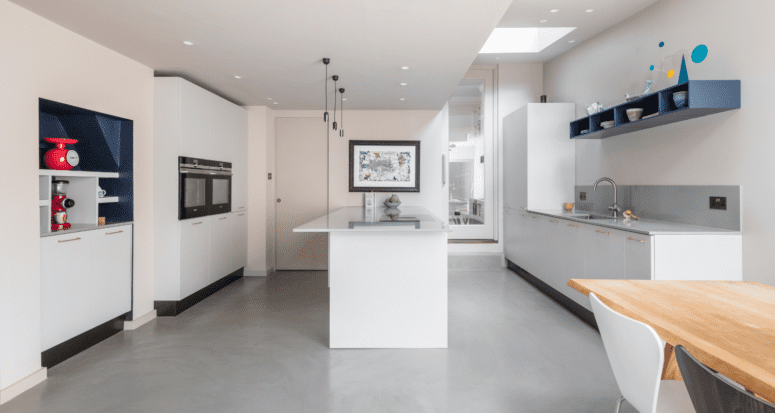6 Pro Tips for Selling a Home From Top Real Estate Agents
- Published on
- 5-6 min read
-
 Jenn Andrlik Contributing AuthorClose
Jenn Andrlik Contributing AuthorClose Jenn Andrlik Contributing Author
Jenn Andrlik Contributing AuthorJenn Andrlik has been a journalist for over 20+ years working for such magazines and websites as BHG, House Beautiful, Elle Decor, Martha Stewart, and leading the local magazine Westchester Home for the past six years. She is highly knowledgeable about interior design, architecture, and real estate businesses.
At HomeLight, our vision is a world where every real estate transaction is simple, certain, and satisfying. Therefore, we promote strict editorial integrity in each of our posts.
Selling a house is a big task. You need a strategy for nearly every step of the process from setting a listing price to styling your interior.
Thankfully, you don’t need to come up with these strategies on your own. We rounded up the hottest tips for selling a home to help you pull off a successful sale.
Our tips come from some of the country’s leading real estate agents:
- Adam D’Annunzio, an Ocean City, New Jersey agent who sells homes 52% quicker than his peers
- Maria DelBoccio, a top real estate agent in Cook County, Illinois who sells properties 65% faster than most agents, and
- Jeff Reynolds, who sells 77% more homes single-family homes than the average agent in Durango, Colorado
Heed their advice and your home will fly off the market faster than you ever thought possible.

1. Price your home with precision
Listing price is one of the most influential factors dictating how fast your home sells and for how much money. Ideally, you should list your home at or slightly below fair market value — the price a buyer and seller would agree upon if the property sold on the open market.
If you price your home too far below market value, you could leave money on the table. And if you list too high above market value, you might miss out on offers from market-savvy buyers who know your home is overpriced.
In our Top Agents Insights Report, 70% of real estate agents agree that overpricing is the number one mistake sellers make during their home sale. If your home’s price is too high, your property may not show up in the correct price brackets when buyers apply pricing filters on listing websites while searching for homes. And even if buyers do come across your listing, they’re less likely to schedule a showing or make an offer if it’s priced significantly higher than similar homes.
“The longer a house is on the market, typically speaking, the less money you are going to receive and the lower the offers are going to be,” D’Annunzio warns. “I always tell every seller that days on market are their enemy.”
So how do you determine your home’s fair market value? Your real estate agent will conduct a Comparative Market Analysis (CMA) to see how your home stacks up against recently sold properties and, in some cases, homes in escrow in your market. Based on their findings, they’ll adjust your home’s value based on differences and ultimately suggest a competitive listing price.
2. Market your home with a virtual reality
According to the National Association of Realtors, 44% of buyers looked for properties online before any other step in the homebuying process. Take advantage of the latest digital marketing tactics to attract buyers browsing homes online.
3D dollhouse
Matterport is the leader in 3D dollhouse and virtual tour technology in real estate. D’Annunzio details how the technology works:
“We have a camera that does a virtual scan of the house and not only does it allow you to walk through the entire house, it also allows you to measure any part of the house and give you accurate measurements of any piece of furniture you want, the floors, and the height from the floor to the ceiling.”
Virtual staging
If you’re selling an unfurnished property, consider harnessing virtual staging to help buyers envision living in your home. Over 41% of top real estate agents believe that vacant homes benefit the most from home staging, which brings personality and life to an empty property.
“If a buyer wants to get a feel for the space, we can take the 3D scan we took, and our Photoshop specialist can put whatever furniture they are thinking about inside the room,” says D’Annunzio. “They may stand in a room thinking it’s small but are surprised at how much it can actually fit with this tool.”
Virtual home tours
Virtual tours, open houses, and showings are a must, especially if your market attracts buyers from out of the area who can’t easily drop by the property. With help from your agent leading the tour, buyers can experience a property fully — from the views outside your window to the insides of your closets.
Hosting the tour on Facebook, Instagram, YouTube, and Zoom, your agent can shoot the live stream with a professional camera or with their smartphone using a gimbal to stabilize the footage. Depending on your agent’s preference, they can run the virtual tour solo or with a partner for production support.
3. “Wow” buyers in the first 30 seconds
DelBoccio says you have 30 seconds to impress a potential buyer when they walk into your house.
“Clients are used to seeing these move-in ready homes on HGTV, and sometimes they feel deflated when they walk in,” she says. “Even if it’s just adding a wreath to the front door and putting planters, a little goes a long way.”
Follow these steps to make a great first impression with buyers:
- Deep clean the entire house, paying close attention to the porch and entryway as these are the first areas buyers see.
- Stage your interior to give it a contemporary look.
- Place a vase of fresh-cut flowers on the entry table.
- Bake cookies for the showings to create a welcoming atmosphere.
- Remove window treatments like curtains and heavy blinds for enhanced natural lighting.
The good news is getting your home ready to list doesn’t require a lot of time or money. For instance, decluttering and cleaning cost around $650 and add nearly $4,000 to a seller’s bottom line on average, according to our Top Agent Insights Survey.

4. Repaint your interior a neutral color
In our Top Agent Insights Report, 57.83% of surveyed real estate agents advise sellers to paint their interior before listing. Painting your home’s interior is one of the quickest and most cost-effective DIY projects you can take on when selling.
According to Consumer Reports, the potential return on investment of painting individual rooms is 1% to 3%, while enhancing the home’s exterior can return 2% to 5% of your investment. A study by Home Gain estimates that painting your interior can add $2,001 or more to your home’s value.
“If you have a dominant color — like everything is red when you walk into the house — you should consider updating it,” DelBoccio comments.
On average, painting a 2,300 square foot home costs between $1,900 and $7,800, depending on where you live, what paints you choose, and how tall your walls are. However, you can save between $2 and $6 per square foot by doing the work yourself instead of hiring a painter.
If you’re going to go through the time and expense to paint your home, you want to make sure you choose the right color. “If you have travertine tiles, which are typically more brown, or if you have white subway tile, or if you have a carpeting or a mix of both tile and carpeting, you’re going to want to choose a paint that works well with that,” DelBoccio notes.
As a general rule of thumb, go for gray if your flooring and features lean cooler. If these elements are a warm brown, a shade of beige may be a better match. When in doubt, ask your real estate agent for guidance.
5. Mercilessly declutter your entire home (closets too!)
Declutter, declutter, declutter. The less decor, personal items, and unnecessary furniture in your home, the better. Decluttering and depersonalizing your interior makes it look larger and more attractive to buyers.
Start decluttering early
Decluttering can take weeks, especially if you’ve lived in your home for many years. Jump on the task as soon as you decide to sell. Start with easy rooms that contain items with little emotional value, such as linen cabinets and bonus rooms. Don’t forget to declutter closets and storage spaces — the less items in these areas, the more spacious they’ll appear to buyers.
Pack your belongings into the garage
When decluttering, pack any items you plan to take to your new home into moving boxes and stack them in the garage. Buyers won’t mind seeing neatly organized boxes in this spa — if anything, it signals to them that you’re motivated to sell.
“If a listing has a one-car garage, I don’t recommend this, but if you have a two-car garage and you can still see the other side and the wall is visible, that can be efficient,” DelBoccio shares.
Rent a storage unit for the listing period
If you need to pack away more belongings than you have space to store, consider renting a storage unit for the listing period. Ask your agent how long they anticipate it will take your home to sell so you can estimate the overall cost. Even if the cost is on the higher side, remember that decluttering will likely help your home sell faster and for more money.
Trust your agent’s objective eye
Once you’ve decluttered, bring in your agent for a quality check. Are there any areas they believe look too busy or packed? If so, heed their advice and reduce clutter in these spaces.
“You should not have a million appliances on the countertops,” DelBoccio shares, as an example. “I tell owners to get a laundry basket and put those things in and put the basket away in a closet or in a storage room during a showing.”

6. Create a memorable calling card
You don’t need to do anything extravagant or expensive to your home to make it stand out from the rest — adding one memorable, unique element can go a long way.
“When I was flipping houses, I used to paint the front door a sunshine pattern,” says Reynolds. “People would walk up and remember that front door.” Painting a front door an eye-catching color only costs a couple of hundred dollars and can help buyers remember your home after a day of showings.
Another way to stand out is to add an interesting pendant light or chandelier above your dining room table. “I don’t think it’s a bad idea to go to a thrift shop and find a unique light fixture. It gets people thinking,” Reynolds comments, noting that these types of additions are inexpensive but eye-catching and can easily be swapped out if a buyer doesn’t like them.
Header Image Source: (Laurence Katz / Unsplash)
